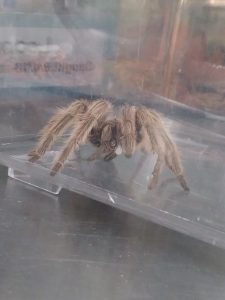Last year, we talked about spiders and their benefits to nature. Today, we revisit spiders to talk about a very interesting trait they have – their venom. Almost all 46,000 spider species have venom. Fortunately for us, there are only a very few that can actually harm people. In our area, there are only two types of spiders of concern: the black widow and the brown recluse spider. Black widows are distinctively black and have a red or orange shape on the back of their belly while brown recluses tend to have a violin-like shape on the back of their thorax.
Spiders primarily use their venom to paralyze prey so they can eat it. The venom is injected into the insect through the spider’s fangs. Spider venom usually is one of two types. Certain spiders produce neurotoxins, which attacks the nervous system of the prey. Other spiders produce cytotoxins, which help in turning the prey into liquid form. This makes it easier for the spider to consume it. In many ways, spider venom is not that different from snake venom.
If you would like to watch a spider eat, we invite you to our public feedings on Fridays at 4:30 pm to see our Texas brown tarantula (Aphonopelma hentzi) eat in his exhibit. Usually the venom will not be seen, but you can be assured the spider is using it to eat its food!

Left: Our Chilean rose hair tarantula eating a cricket. A venom drop, in white, can be seen on the right side of the mouth.
